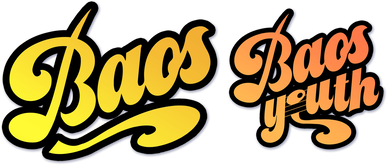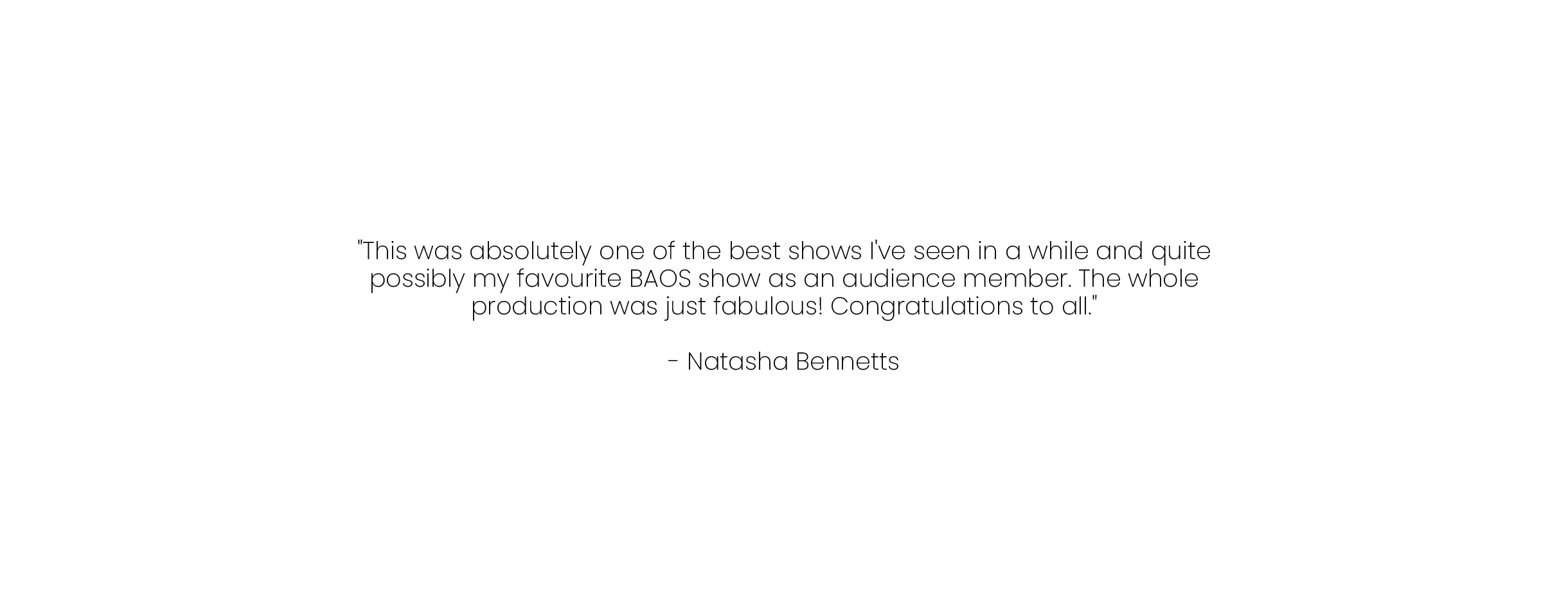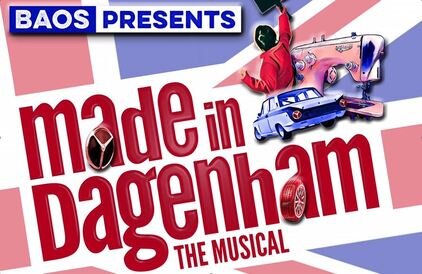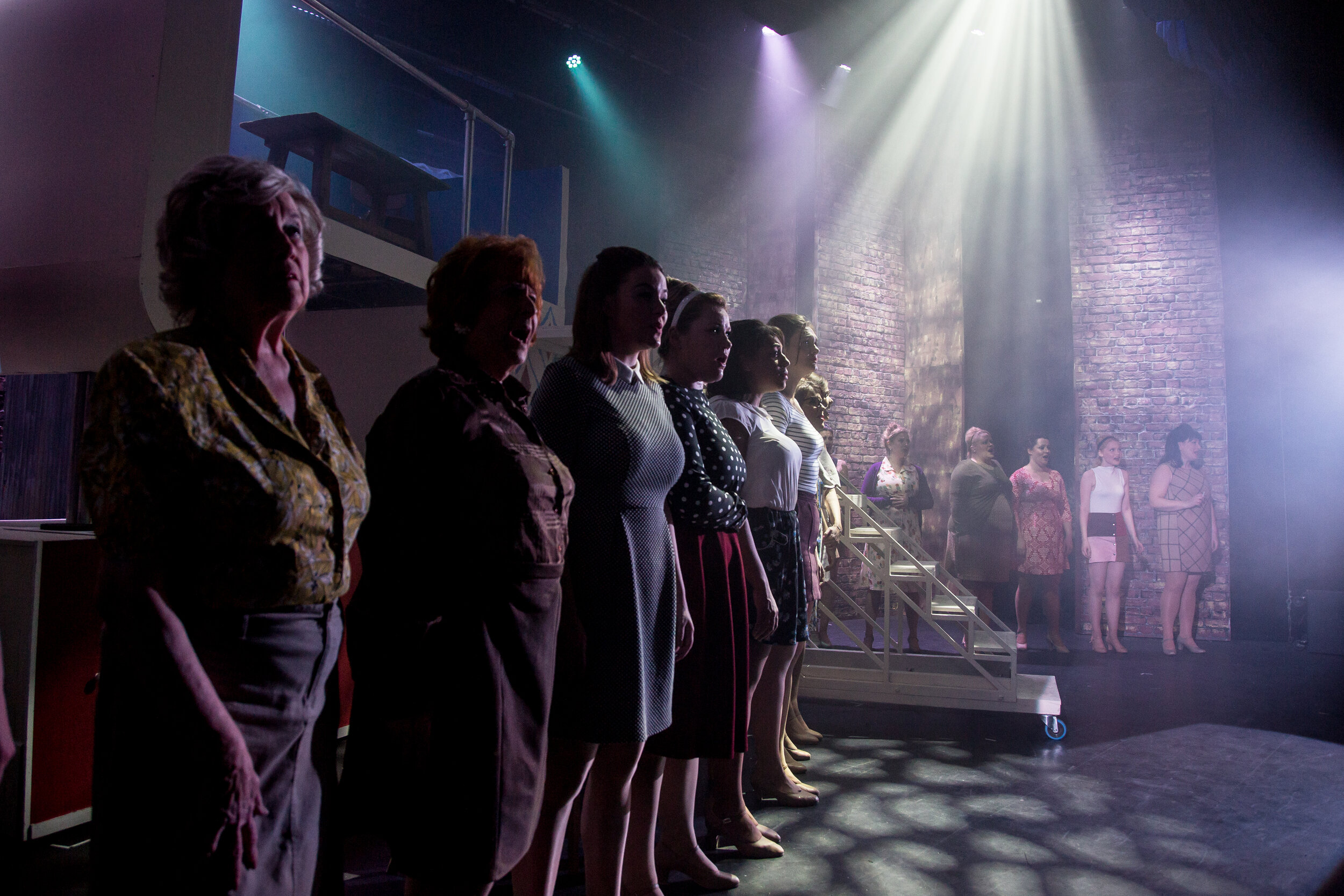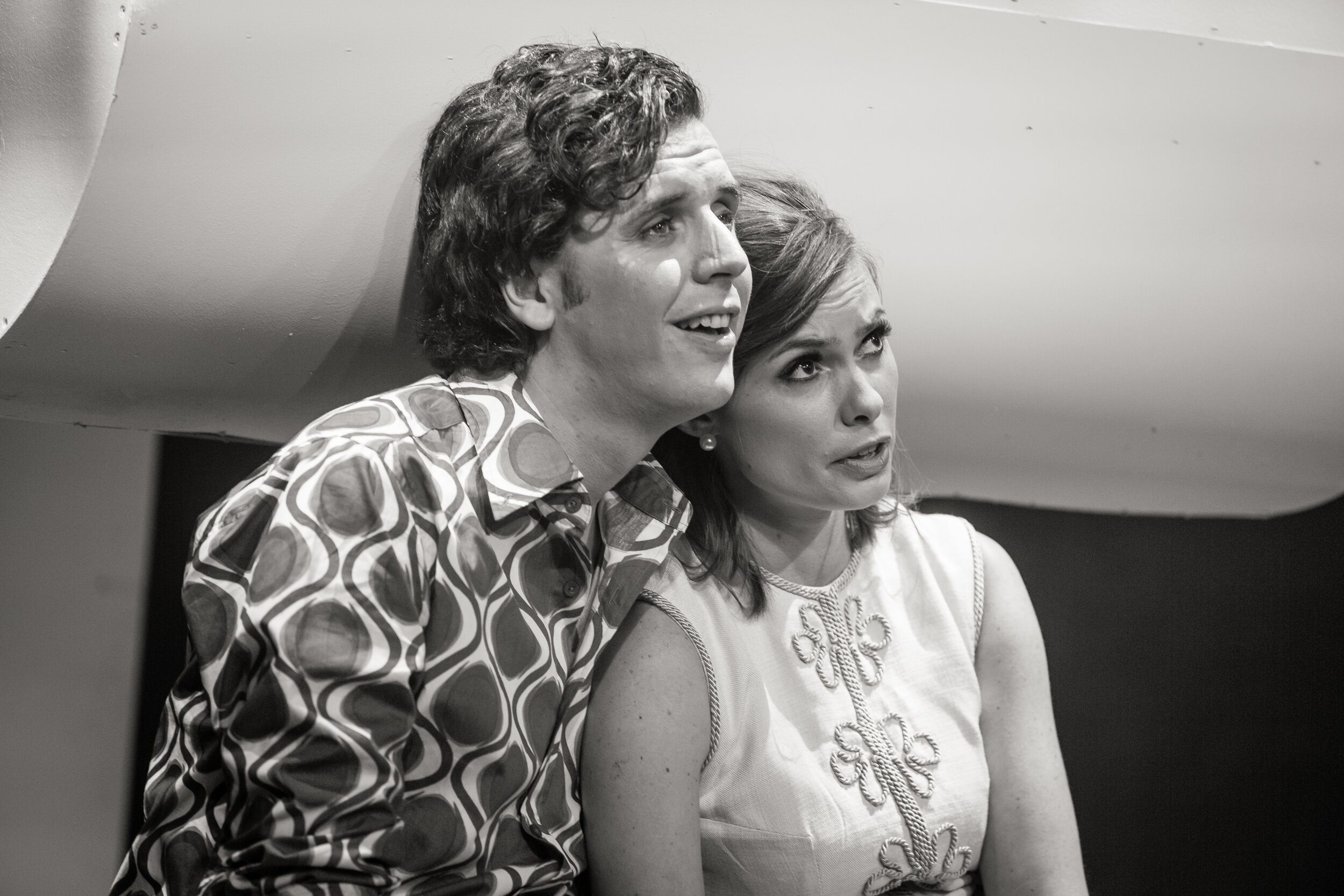
Previous Productions - Made In Dagenham
Name of Society: BRISTOL AMATEUR OPERATIC SOCIETY
Name of Production: ‘MADE IN DAGENHAM’
Music By David Arnold, Lyrics By Richard Thomas
Date: 13th April 2017
Venue: The Redgrave Theatre, Bristol
Adjudicator: Claire Morris
Based on a true story, Made in Dagenham was originally a film made in 2010, with the stage musical version opening at London’s Adelphi Theatre in 2014. Rita O'Grady (a fictional character) leads the 1968 Ford sewing machinists strike at the Ford Dagenham plant, where female workers walked out in protest against sexual discrimination, demanding equal pay. The strike was successful and led to the Equal Pay Act 1970. Despite performing the specialized task of sewing upholstery for car seats, women are classified as unskilled labor and paid much less than men. Encouraged by a sympathetic union representative, Rita agrees to bring the women's grievances to Ford. The meeting goes badly and, outraged by the company's lack of respect for them, Rita leads her colleagues to strike.
SETTING/PRESENTATION
This is a challenging production for the stage as there are so many set changes required throughout. This was managed very effectively – by a fairly minimal set in terms of furniture and backdrops, by a creative use of stage area and the actual sets used, and by the deployment of cast members in effecting swift changes. The opening scene revealed a simple set with wooden stairs/bedroom area and the downstairs kitchen area. From there we moved from factory area, to bar, to offices, to school, to Downing Street, to hospital, to a park…The list of the ever changing sets is endless and you are to be congratulated on the the very efficient and effective way that these were presented and dealt with. It is hard to select any one impressive set in particular but the use of the “upper tier” as first bedroom and then union office, and the multifunctional swivel unit are certainly ones to remember. This was an excellent example of where “less is more” – there was no clutter in the form of furniture or props throughout, and Big Ben was sufficient to indicate Number 10, as was a bed screen to indicate a hospital.
COSTUMES AND MAKE UP
The year in question is 1968 and Mary Quant and Carnaby Street were all the rage. Again, a multitude of costume changes are required and we saw an extensive selection of the clothes of the day with slick costume changes often effected on stage. The production opened with Rita in a ‘mini’ and Eddie in denim shirt and baggy trousers and from then we were in for continual treats of colour and design. It was a clever touch to have all of the factory girls in matching shoes and the theme of matching outfits continued for the vibrant cheerleader costumes and cheeky pink dolly pyjamas to the wonderful outfits for This is America with matching blue skirts, white tops and trainers. We felt a sense of fun with the costumes – the Aides in suits and bowler hats, the inevitable mac and pipe for Harold Wilson, Barbara Castle with her early Maggie Thatcher style blue jacket and large handbag power dressing, the colourful sunglasses and hats for the trip to Eastbourne and Tooley complete with Stetson boots and spurs. Clever use of costumes was made throughout to denote cast members status and occupation - Connie’s costume was the power dressing of the day, and she looked a cut above the other factory girls, as did the elegantlly made up Lisa with her hair do, earrings and coat.
The hair styles were a great ‘finishing touch’ to the costumes, again indicating effectively not only the trends of the time, but also their status and occupation. The make-up used was very subtle. This was though the era of Julie Christie, Sandie Shaw and Twiggy and characters looks could perhaps have been more era-defined by bolder make-up, particularly with the eyes. Also, beware when ageing cast members – Harold Wilson – to ensure that wrinkles and age lines are well blended with the rest of the make up and do not simply appear as lines drawn on the face.
PROPS
One of the impacts of having simple set designs is that props can then play a more prominent part in visually enhancing a production, and this was certainly the case. The audience were treated to a vast array of engaging props – from the impressive Cortina and the easily transportable sewing machines on tables, to the dead pigeon, the cheerleaders pomp oms, copies of Fiesta, blackboard, telephone, suitcases and steering wheels for Eastbourne, to the tannoy and the TUC sign that then became the lectern.
Using smoke on stage is always a challenge to make sure that it is visible and plays its part whilst not overpowering the audience. It was used a little too enthusiastically in Act 1 but the more subtle use in the Cortina scene worked well.
SOUND EFFECTS
In a musical production when the word ‘Sound’ is used, it is understandable that this is often attributed to the musical numbers. However, the correct timing and appropriate realism and volume of sound effects also plays an important part, as it did here. We had very realistic helicopter sounds, as well as a telephone, doorbell and tannoy.
LIGHTING
There can be a danger in a vibrant musical production such as ‘Made In Dagenham’ to overuse the lighting and to continually dazzle both stage and cast in strong lights, often constantly changing strength and colour. However, this was not a trap you fell into here. For most of the production, the lighting adequately covered the stage and characters and only occasional use was made of spots. This minimal use of spots made it all the more effective when they were used, noticeably in the opening scene where we were treated to an array of flashing lights and for the significant final speech made by Rita where great use was made of different changing colour spots.
DIRECTION
Excellent swift pacing right from the start with an energetic opening. This is a musical which portrays a variety of emotions and the variety of pace used throughout the production needs at times to vary accordingly, and this was well done. As soon as songs ended dialogue and action began which gave a good flow to the production. The stage was used well for all of its many purposes and creative use ensured that it could accommodate large numbers of the cast for chorus scenes, but equally when only one or two characters were on stage they still seemed to fill the area. Of especial note was the end of, ‘This Is What We Want’ when the women were wheeled forward followed by a swift change back again to a set with the women and their machines, and also the airs of dejection portrayed in Act 2 by Eddie, Rita and Connie - all for different personal reasons. A great touch to include the Cilla cameo!
MUSIC
The music for this production really suits the theme of picket fences - the chanting and sense of togetherness can be found through the choral singing, empasising the importance of activism and standing together in difficult times. This is contrasted well by the often sensitive and more emotional duets and solos.
This was musically an extremely strong cast and I was impressed by the balance between those songs requiring great energy with the more sensitively delivered solos and duets. The female factory chorus exhibited the strength of the ensemble’s harmonies with a warming element of solidarity. Both chorus and soloists could all be clearly heard with clarity of lyrics at all times, well supported but not drowned, by the orchestra. It is hard to select specific songs but, ‘I’m sorry I Love You’ was really touching and Rita and Eddie’s lovely voices complemented each other well, supported by gentle background crooning; ‘The Letter’ was a winner - well executed in a slightly ethereal way with Eddie and children appearing to be like ghosts; The ‘School Song’ was excellently delivered by Graham; ‘This is America’ was a show stopper and well done to Barbara Castle for ‘Ideal World’ - not an easy song but you handled it beautifully.
MOVEMENT
What can often make the difference between a good musical and a great one is the standard of the choreography. There was plenty of splendid choreography throughout. The standard was set early on in ‘Made In Dagenham’ where I loved the machinery movement and only wished there had been opportunity to see more, and was swiftly followed by so many examples of quality and high standard. I particularly loved the use of Monty on the stool in ‘This Is What We Want,’ where he was being wheeled around, the swapping of glasses in ‘Pay Day’, Rita on the stepladder for ‘Everybody Out’ with the women framing her either side - first one side with overalls, one with coats then all with coats, the chorus dance for ‘This Is America’, the great tableau-type end of ‘Trip to Eastbourne’ and the visually effective choreographed ending when the curtains opened behind to reveal the rest of the workers.
ACTING
RITA O’GRADY
The housewife who finds herself reluctantly involved, and then leading, the cause for working women demanding equal pay. She has to find the balance between domesticity, work and her marriage and you made us feel for, and with, you. This was a quietly powerful performance as we saw your confidence, strength and determination for justice grow. We could really see you realising how important this cause was as you sat next to Connie in the bar scene, and became her confidante, and then really coming into your own as you stood on the desk to sing ‘Skilled Work’. First and foremost you remained a wife and mother, as you reminded us when we felt your panic when you discovered that Eddie and the children weren’t at home. A very impressive performance.
EDDIE O’GRADY
Another strong performance, and we could feel your various emotions of confusion, embarrassment and pride as Rita became more and more involved in the union action. The lad who loves being with his mates (you made a good drunk - I really thought you might fall!) but who loves his wife and children even more. A creditable accent was maintained without - you delivered the Millwall speech well. What a small voice you used at the end when telling Rita how sorry you were - perfect. A very credible and sensitively delivered performance.
BERYL/CASS /CLARE/SANDRA
The factory girls, each with their own personalities which shone through in the performances given. Goofy Clare who seemed unsure most of the time what exactly was going on, but didn’t mind being teased by the others – ‘Wossname’ was definitely your moment and you maintained a good accent. You so loved being in Parliament and actually meeting Barbara Castle! Sandra who was always up for a laugh, rather lovable but vulgar, perfectly delivered some cheeky lines – “getting any?” “I’ve had him”. A great singer and mover you seemed to be having such fun although we sensed you hadn’t realised how high profile this strike was until you met, and were mesmerised by, Harold Wilson. Cass and Beryl made excellent contrasts - the young, trendy and enthusiastic Cass who was idealistic and up to support the others, and the battle-worn and weary Beryl, swearing like a trooper and smoking like a chimney, who has seen it all before and preferred the opportunity to drain the sherry rather than listen to the politicians.
CONNIE
Determined Connie with a strong sense of justice, we saw your conscientiousness as you worked hard on your speech in the bar scene. It seemed that maybe this was all too much for you as you looked so worn down in the Berni but then we saw your old passion flare up as you told Rita her daughter could be a doctor. Great sadness was felt whilst you were in hospital and we could sense your desperation as you knew you weren’t going to be able to do the speech. You covered the demanding range of emtions required well.
THE UNION - SID/BILL/MONTY/BARRY
You four were the backbone of the factory union, totally confused and out of your comfort zone with the female uprising! You made a solid male unit but not as macho as you hoped to be. Sexists Stan and Bill who thought women should be seen and not heard, poor Monty who looked so bewildered when the women weren’t pleased to hear his news about their new grading and so vulnerable when Connie died and he revealed his love for her. We couldn’t help but feel sorry for poor Barry with all those women teasing him!
FORD MANAGEMENT - MR TOOLEY/MR HOPKINS/RON MACER/GREGORY HUBBLE
You four men represented the company - with an embarrassing problem on your hands to be dealt with as swiftly as possible! Mr Tooley: you were the larger-than-life, typical ‘American’ who is always right and gets his own way, and is disturbed to find that in this case he doesn’t. You were also revealed to be the ultimate bully and sexist as you tore up Connie’s speech. Mr Hopkins: you can cope with work and being the company yes man but looked out of your comfort zone when dealing with your wife or indeed any assertive women. Macer: you were the most staid of the men and didn’t seem to want to rock any boats, which meant that with Tooley’s arrival you looked scared at the thoughts of the possible outcome of this visit. Hubble: you were one of the lads made up to management and with Tooley’s arrival all you could do was play the subordinate and copy your boss in assisting his attempts to bully the women into submission. We did enjoy the laugh though with/at you when you took your wig off in the Cortina scene.
THE POLITICIANS - HAROLD WILSON AND BARBARA CASTLE
For those audience members of a certain age, we were instantly taken back in time with the arrival of Harold Wilson and Barbara Castle. Cleverly, you were a reminder, but not copy or caricature of the politicians of the time. You each remained your own character, presented some amusing banter between you and it was particularly enjoyable to see Barbara growing ever more assertive in her role against Harold. Well played.
LISA HOPKINS
The housewife of the factory manager, who despite appearing to have a far more privileged standard of living, showed compassion and also her humanity with similar issues to Rita in dealing with her husband and the school. A very competent performance with the perfect cut-glass accent in great contrast to Rita’s down to earth one.
SHARON AND GRAHAM O’GRADY
Two children caught in the middle of the battles their parents were facing. You both showed appropriate and convincing emotions throughout - right from your rather ‘fed up’ faces in the opening scene. You both demonstrated great skill in remaining in character the whole time you were on stage, even when you were just observers. Well done.
OTHERS – REPORTER/ADAMS MR BUCKTON /CHUBBY CHUFF/CORTINA MAN/STAN/CROMWELL/ /ASTRO/AIDES/MC
There are a number of supporting roles in this production, and we briefly saw a typical reporter out for himself and a good story, and Adams, the American ‘yes man’ to Tooley. This is also a musical which expects some members of the cast to take on more than one role and those of you that did so rose well to this challenge. We did not like you, Mr Buckton, but Chubby raised a smile from us, even with his awful gags, as did the three aides, reminiscent of MontyPython. Each and every one of you showed versatility.
SUMMARY
This was a production of high quality, where there was a sense of teamwork enjoying
humour, powerful singing with pace and energy, well-choreographed routines and at times demonstrating sensitivity and raw emotion. This is a challenging show, both musically and technically but was well directed and the cast certainly did it justice. You are all to be strongly congratulated.
Thank you for ensuring that a script was sent in advance and for your hospitality on the evening. I wish you every success with your next performance.
BAOS - Made in Dagenham - The Redgrave Theatre
12 April 2017
Director - Matthew Harper, Musical Director - Brendan Casey, Choreographer - Will Ferris
This is another musical that is based on a film of the same name, which in turn is based on actual events of the Ford machinist's strike. As a film it received several awards, as a musical however it did not do as well, opening in October 2014, and closing despite a good reception, in April 2015. Director Matthew Harper chose his cast well, but in places the pace was a little slow, but this was only in the first Act and the pace picked up in the Second Act, it is possible that this is due to the storyline rather than the cast. I must congratulate Alex Milner for the ingenious design for the programme.
SET
The set was fairly simple and each scene was well represented and gave the right impressions, it is often difficult to have to change so many different scenes but this was well done and with the help of the cast and backstage crew these were handled quickly and quietly.
MUSIC
With Brendan Casey at the helm, you know that the songs have been well rehearsed and the Orchestra kept under control. However, it was too loud in the first couple of chorus numbers that we lost the words, but the solo numbers were always at the right level and we could hear every word.
SOUNDS
The sounds in the hands of the experienced James Hartland were for the most part well handled, the soloists being clearly heard, but occasionally with the chorus the orchestra did drown out the words.
LIGHTING
The lighting in the hands of Paul Lewis and George Malin made sure that everyone was well lit, and that there were no dark patches.
CHOREOGRAPHY
The cast handled the choreography well and it was simple and at all times the cast were together.
COSTUMES
Congratulations to the Costume team Becky Collier, Anna Sutton, Jane Black and of course for that bit of sparkle John Cousins. It must have been hectic with the many changes and all the cast looked in period in the colourful mini skirt style.
HAIR/MAKE-UP
All the hairstyles looked in period.
THE CAST
RITA O’GRADY (Sarah Wikinson)
This was an outstanding and powerful performance. We saw you run the full range of emotions – the doting Mother and “little wife” shy and obedient to her husband. The change from this was gradual and natural and in the end, we saw the strong woman emerge standing up for “Women’s Rights”. A professional style performance, you have good stage presence and a natural acting ability, always staying in character and being part of the action, with a clear singing and speaking voice, and good interaction with the other members of the cast. Congratulations on a flawless performance.
EDDIE O’GRADY (Dan Leese)
Dan created a believable character, and there was good interaction between you and Rita, we felt for you as you wrestled with problems that befell you, and you always stayed in character. And although you felt you had to leave with the children as Rita became stronger, leaving you behind. We could also see that the attraction was still there and in the end, you stood up and supported her. Good clear singing and speaking voice, this was a natural performance and at all times you looked relaxed and at home on the stage. Well done on a confident performance.
BERYL (Holly Ward)
This was a convincing performance and you created a strong personality for the character, and always stayed within that role, from your swearing which was done as a matter of course this was your everyday language and you showed the strength of the character, with a good strong voice and stage presence. You interacted well with the other girls as part of the team, this was a first class performance, well done.
CASS (Bethany Taylor)
As the youngest of the work force you were the young naive idealistic girl who was always reaching for the stars, you worked well with the other girls, you saw the best in everyone This was a confident performance, you have a clear speaking voice and good stage presence well done.
CLARE (Jenny Bryant)
This was another well rounded and thought out character, and you interacted well with the other girls, and your song “Wossname” was well handled we could hear every word clearly and at all times you looked relaxed and at home on the stage. A convincing performance, well done.
SANDRA (Dani Copperstone)
You have an excellent voice which you used well in the song “This is what we want” you definitely did not need a mike. A powerful performance and even though the money tempted you to appear as part of the Cortina song you still supported the other girls in their strike. A natural performance, good stage presence and at all times within the action. Well done.
CONNIE (Louise Couzens)
You gave a strong performance one which created the right attitude and persona of a union rep and you looked at home on the stage and had created a real and believable person, bringing that character to life, there was also a good transformation from the strong person to the emotions of the person in the hospital despite everything still rooting for your girls. Well done on a characterisation which showed a maturity in your performance.
MONTY/BUCKTON/AIDE (Dan O’Hare)
You had three roles to portray, and you handled each one differently, from the meek and mild union rep, who it was obvious wanted the best for the girls and was devastated when Connie died, you showed the strength of character and became the worm that turned. Well done.
SID/AIDE/MR TOOLEY (Will Pope)
Will also had three different roles which you handled with ease, although as the Aide at times we lost some of your dialogue because of the voice you put on. As Mr Tooley you became a strong typical no nonsense “American” who is always right and gets his own way, and is disturbed to find that in this case he doesn’t. Good voice in your song keeping the accent all the way. Well done.
BILL/AIDE/REPORTER (Dom Perry)
Another actor who had to deal with three differing roles, from the condescending Aide, aren’t they always yes men!” A typical reporter out for his self and a good story and lastly as Bill who thinks women should be seen and not heard, well done on a well thought out performance.
PRIME MINISTER-HAROLD WILSON (Robert Hardacre)
As the Prime Minister, we had the pipe and the Gabardine so that we knew who you were, this was a gem of a part especially in your song and dance “Always a problem” I did feel you could have made more of this but otherwise this was a convincing performance.
BARBARA CASTLE (Jemma Legg)
It is always difficult to have to portray a real person without trying to copy them. Jemma made this character her own but also showed the strength of the real Barbara Castle and even had the accent which was enough without going over the top. This was a strong and confident performance, with full command of the stage at all times, good voice and your song “In the real world “was excellent. Congratulations, this was a well-crafted performance, it was obvious that you had thought about the person you were portraying.
MR HOPKINS/CORTINA MAN (Lynden O’Neill)
Lynden had two different roles to portray, as Mr Hopkins the factory boss, you brought this character to life, as the creepy, smarmy, yes man, a part that Lynden is good at playing. To the all singing and dancing Cortina Man, well done on an excellent performance.
LISA HOPKINS (Sarah Bailey)
Sarah had obviously thought about this role and you crafted a strong woman, who lived two lives, firstly as the obedient wife, but under all this was a strong dominant person who decided that it was time that women stood up for themselves. A memorable and first class performance., well done
SHARON O’GRADY (Evelyn Coghlan-Forbes) and GRAHAM O’GRADY (Desmond Coghlan -Forbes)
Put young children on stage and you have the aah factor, Evelyn and Graham looked at ease on the stage and have clear speaking voices, you both looked relaxed and gave natural performances of the O’Grady children we could believe that this was a real family. Congratulations to both of you.
THE COMPANY
The company who had to play the many different roles, was well rehearsed and kept in character, there was good singing, good movement where you were always together, and keeping the role. This was good team work, having to deal with the many changes, you always looked right in your many costumes, and apart from having to learn lines, songs, dances you had to help move the set. Well done on the first-rate team work always part of the action and good interaction with the other members of the cast.
I enjoyed the show, it was something different from the usual musical, and it was obvious that the cast had worked hard and were enjoying themselves, well done to Matthew, Will and Brendan and of course all the many people behind the scenes who go to complete the team.
Thank you for your kind invitation and welcome front of house. I look forward to seeing BAOS Youth later in the year, and being invited to your next production Legally Blonde.
Tony Winstone
NODA Representative – District 13
